A hotel from another planet lands in rural Brittany
There are many places where you expect to see jaw-dropping architecture, but the quiet Brittany countryside isn’t one of them. As we walked toward Hotel l’Essenciel (not a typo, ciel means sky) with its 36 rooms, or “nests” suspended around its central structure, with the flying-saucer shaped restaurant La Table des Pères at its foot, I had to wonder if I’d stepped into a parallel universe or on to another planet.
Inside, the cocoon-like room was as stylish as any boutique hotel, only with a slight bounce in the floor – thankfully not gravity-defying. From the window, we had an incredible view of the sculpture park in the grounds of the 18th-century Château des Pères, once a monk’s retreat and now a centre for woodwork, sculpture and pottery workshops. These classes give a clue to why the hotel was built here, surrounded by farmland 50 minutes south-east of Rennes. Its owner is the Legendre family, founder of the Groupe Legendre construction firm, who wanted to showcase the industry’s ingenuity and talent by creating something with a wow factor. They did not disappoint.
Doubles from €180 room-only
Carolyn Boyd
The Roker riviera, Tyne and Wear
To my mind, Sunderland is the best city in the north-east. I went for a city break a few weeks ago, and left the former shipbuilding heavyweight irreparably smitten: with its people, its pedigree, its architectural spread, and by what it’s putting on the table (the tacos at Mexico 70 were ineffable, the sandwich at Pop Recs sublime).
Other gleaming features include the Penshaw Monument (a whopping folly on a hill), the National Glass Centre (a revealing experience by the river), and a local speciality called Pink Slice. Jordan Pickford aside, Sunderland’s brightest asset must be its beach – the Roker riviera. LS Lowry used to journey across the Pennines to holiday here every year, and it’s not hard to see why. As I ran along its spirit-lifting length, the beach appeared to go on forever. Oh that it did!
Ben Aitken
The Canary Islands’ Little Venice

When a friend invited me to Gran Canaria this summer, I thought I knew what to expect. I’d been to Tenerife and Lanzarote, and was keen to explore another lunar landscape. To an extent, I was right. We trekked around Pico de las Nieves, the summit in the centre of the island, and ventured out on to the vast Maspalomas dunes.
What I wasn’t expecting to find was a Little Venice. Puerto de Mogán is an old fishing port linked to a newer marina by a series of canals and bridges, hence the nickname. Visitors can wander around the flower-filled streets and boardwalks, take a boat trip (no gondolas, sadly) and swim off the sandy beach under high cliffs. We climbed to a lookout point above the fishing quarter, then headed down to one of the numerous waterside restaurants to eat garlicky lapas a la plancha (grilled limpets) washed down with Canarian white wine – at a fraction of Venetian prices.
On the edge of town is the fascinating archaeological site of Cañada de los Gatos, a pre-Hispanic settlement thought to be more than 1,300 years old. The Museo Canario in Las Palmas, the capital, is a good place to learn more about the indigenous Guanches who built it – yet another aspect of the Canary Islands I had been in ignorance about.
Rachel Dixon
A chilling experience in an ancient tomb, County Meath

At the end of a country lane about 15 minutes’ drive west of Drogheda sits a big grassy dome fronted with quartz and engraved kerb stones. From afar, you could mistake it for some sort of military installation. Or, as an Irish colleague put it: “Post-restoration, it looks like a 1960s Methodist church.” But Newgrange tomb is among the oldest buildings in the world – it predates the pyramids by five centuries. The late archaeologist Michael J O’Kelly excavated and restored Newgrange from 1962 to 1975, and made a remarkable discovery, which he eerily related in Arthur C Clarke’s 1980s television series Mysterious World.
O’Kelly found a slit above the entrance to a vaulted inner chamber that contained the bones of four adults and one child. His theory was that the slit was put there to let in the rays of the rising sun to wake the spirits of the dead. But only on one day of the year, the winter solstice.
“The first shot of orange-red light penetrated right to where I was sitting,” O’Kelly said. “It gradually widened to a 17cm band that illuminated the whole interior. I could feel the spirits of the dead all around me … and then a point came after 17 minutes, a sudden cut-off. Darkness.”
As we weren’t there on the shortest day of the year, we had to make do with the guide’s torch to simulate the sepulchral light. Even so, it was a chilling experience. And mind-boggling to think that 5,000 years ago, without the aid of mathematical tools, stone age builders had arranged this aperture to be perfectly level with the horizon when the sun casts its first rays, on only one day a year.
Booking essential, heritageireland.ie
Andy Pietrasik
Vineyard revival, Czech Republic
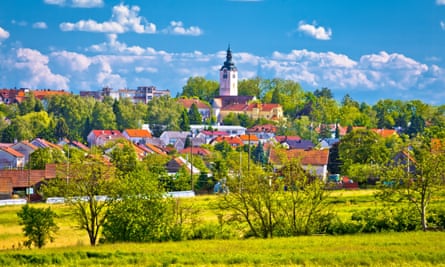
While on a tour of the Czech wine region of Znojmo, I was initially a little dubious when we pulled up in Vrbovec (population: 1,200). This unassuming town, however, is the site of a spectacular cultural renaissance. When German speakers were expelled from Czechoslovakia after the second world war, Vrbovec lost almost its entire population, along with its wine-related traditions and festivals. But in the early 2000s, its residents (now mostly Czech speakers) revived these traditions, and they’ve been a huge hit nationally – helped along by their delectable wines, which are also making a comeback after decades of neglect under communism. Their summer harvest festival, featuring Moravian folk dances and lots of wine, drew about 2,000 people last year.
Outside of festival time, a folk culture trail and wine cellars are open every weekend – owners will place a yellow bike outside to indicate that a cellar is open to visitors. I suggest arranging a visit through a local tour operator (try Wine Tours Moravia), as it’s still so off the radar – but I suspect that will soon change.
Sarah Gillespie
Here for the beer – and the decor, Cwrw pub, Carmarthen
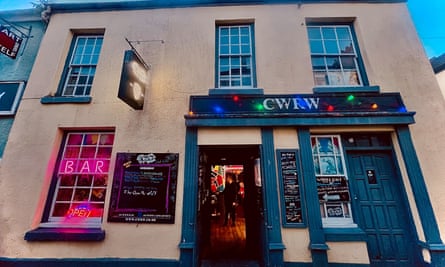
The name Cwrw (“kooroo”) means beer in Welsh. Selling all kinds of craft ales, lagers, sours, stouts and wheat beers, this colourful pub in Carmarthen does what it says on the sign and more. It hosts tastings, comedy nights, poetry readings and regular live music.
What drew me in was the motley decor: pot plants and bunting trail round a window that says BAR in neon letters. Lighting ranges from repurposed traffic lights to filigree lamps; postcards paper the beams and international number plates hang over the bar. One of the wooden tables sits under a wall-sized photo of sunshine streaming through a misty forest.
Upstairs, above a patchwork sofa, there’s a record store. The streets nearby are home to independent shops, cafes and art galleries. The Oriel Bevan Jones gallery opposite is run by the Arts Care charity and sells elegant textiles.
Phoebe Taplin
‘Peerless’ kebabs, Ankara, Turkey

Checking my credit card statement recently, I saw that Ciğerci Aydın restaurant (on Tahmis Çarşısı street) had charged me the same amount twice on the same day. I worried I’d been double charged, but then remembered I visited it twice in the space of a few hours, ordering the same thing each time.
I was in Ankara to catch the Doğu Express train, and had ordered lamb and chicken skewers, adana kebab (seasoned ground lamb) drowning in yoghurt and tomato sauce, Turkish tea poured from a stacked metal kettle, and syrupy hot knafeh (a gooey, cheesy dessert). All common menu items in Ankara, but peerlessly sumptuous here.
I waved a skewer at my friend and said: “It’s just meat on a stick. How can they make it taste this good?”
By my fifth visit, the charming waiter laughed and ushered me to my favourite table.
Jamie Fullerton
A very special island – weather permitting, Devon

This is one of those well-known places that few visit. Lundy sits 11 miles off the coast of Devon, isolated by storms, winds and tides, accessible only when the elements allow. My trip this year was almost abandoned, but the storm blew itself out and a three-night stay was trimmed to a day. The high possibility of cancellation seems only to sharpen the appreciation when the venerable MS Oldenburg ferry does operate.
Rock climbers have a cornucopia of great routes, including the classic, Devil’s Slide; hikers enjoy magnificent panoramas; swimmers get seals and lots of smaller creatures. There is even a convivial pub where you can sit and read about the colourful history of this rock, barely a half a mile across and three long. Seabirds are a particular attraction and a growing one: the population hit 40,000 in 2023, the highest figure since the 1930s.
Kevin Rushby
Mural trails and top tapas in Torremolinos, Spain
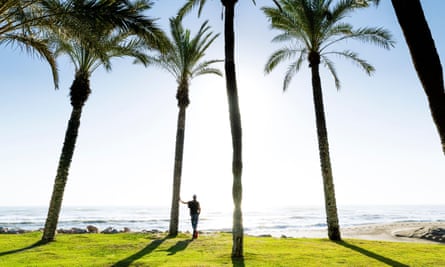
This well-trodden – and some might argue, tacky – Costa del Sol resort may seem an unlikely candidate, but off-season it yielded unexpected delights. Blame it, perhaps, on the balmy subtropical climate, but wandering the newly scrubbed-up streets – it’s recently benefited from a €10m regeneration scheme – my partner and I enjoyed bargain verdejo and tapas at frenetic 60-year-old institution Bodega Guerola on Calle San Miguel, explored the bars and restaurants of Pueblo Blanco (a labyrinth of alleyways around a picturesque white courtyard) and strolled along the palm tree-lined paseo to the sleepy fisherman’s quarter, La Carihuela.
We also marvelled at the new trail of vast public murals (Ruta de Murales) celebrating iconic past visitors from Sinatra to Bardot, as well as LGBTQ+ history on Pasaje Begoña, where a key artwork marks a pivotal 1971 police raid of its pioneering gay venues. Happily, in 2023 the queer scene is ever-expanding, especially in the La Nogalera neighbourhood: another welcome discovery.
Stephen Emms
Slow cooking at its finest in Sofia, Bulgaria
Like most of my finest discoveries, this cosy old restaurant came recommended by a fellow passenger on a train. It was midwinter and I was travelling from Bucharest to Sofia, snowdrifts rising around our carriage as I yearned for stodge, stew and maybe a fireplace. “Go to Staria Chinar,” she said, scribbling in my notebook. On arrival in the Bulgarian capital my friend and I set off on foot, passing the golden dome of the Alexander Nevsky Cathedral, from which it was a five-minute walk to what appeared to be an old house with a courtyard and antlers for a door handle. Winding up the stairs, we passed a warren of low-lit rooms with worn floral wallpaper.
Only one other couple was seated in our nook as we tucked into sticky wodges of lamb slow-cooked in the outdoor clay oven along with gooey beef cheeks in black pepper sauce. My fingers were slicked with the saltiness of fried cheese and my stomach full and sated.
Monisha Rajesh
The history of Bordeaux under one roof, France

It was a family holiday and we needed cheering up, so had spent the morning at the old Chartreuse cemetery. When sudden rain sent us looking for shelter, I didn’t expect much from the Musée d’Aquitaine, except that we’d be dry. But it was a revelation: a Roman altar to a lion-headed god; golden coins stamped with galloping horses; a medieval carving in which an angel stilled the sword Abraham held poised to cut Isaac’s throat. Here were ancient objects imbued with undimmed power.
Best of all was the Venus of Laussel, the most exciting prehistoric rock art I’d seen. Carved into limestone at least 22,000 years ago, she is naked, pregnant and holds a bison horn. I wished she wasn’t behind glass, that she was still part of the cave where she was discovered in 1911. But to fall into her company by chance was a blessing.
Peter Ross
Spas, vineyards and hilltop castles in Croatia

It’s easy to be sceptical when tourist brochures talk about “fairytale lands”. But then you look at the Zagorje region of northern Croatia and think: fair enough. With a glass of crisp Croatian sparkling wine in hand, I lounged on a deck chair overlooking the vineyards and gentle hills of Vuglec Breg guesthouse and winery, watching the autumn light work its magic. Weekenders from Zagreb and Slovenia stay in rustic houses called hiže and enjoy swimming in the hillside infinity pool, wandering through vineyards, tasting the family’s wines and feasting on roast duck.
This luscious green region between Zagreb and the Slovenian border is home to hilltop castles (including 16th-century Veliki Tabor), thermal spas such as Terme Tuhelj, and Europe’s largest collection of Neanderthal remains at Krapina. Boutique wineries make superb graševina, traminer, pinot noir and muscat. Vuglec Breg has doubles from €105 B&B and apartments from €170. All have terraces, and some feature saunas and hot tubs.
Mary Novakovich
Zurich’s lakeside ‘bathing palace’
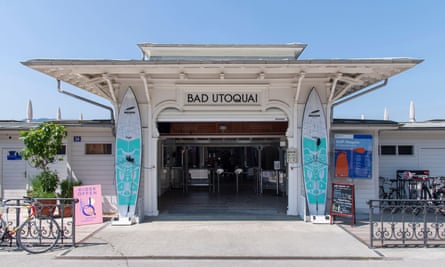
“What are your plans for the stopover in Zurich?” My son and I had bumped into Vicky, an old friend, in the Eurostar queue and when we realised we were booked on the same trains between London and Milan we started plotting meet-ups. A two-hour transit in Zurich opened up the possibilities and, as the co-author of wild swimming books, Vicki soon had us digging out our swimming gear and catching a tram to Seebad Utoquai.
Reachable in 15 minutes from the main railway station, the Badi (built in 1890) is a historic “bathing palace” on a lakeside promenade. Though it looks out over Lake Zurich’s glacier-blue waters to mountains, its elegant wooden jetties, changing rooms, sun terraces and yoga classes give it the feel of a beach club. We swam out around the baths’ pontoons, giddy on fresh air and endorphins, before hauling ourselves out of the water for hot chocolates in Utoquai’s cute cafe – a fine way to wash off a long train journey, we agreed.
Rhiannon Batten
after newsletter promotion
Ancient beech and fern forests in Romania
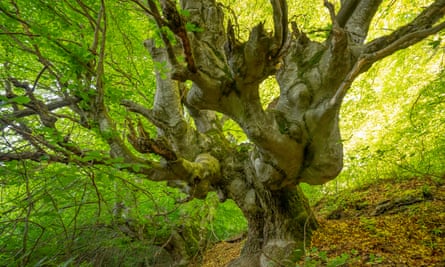
I love Romania’s wild beauty, and on a trip this year discovered an ancient beech forest just outside the village of Nucșoara, on the southern slopes of the Făgăraș Mountains. They are among the oldest and most spectacular beech trees in Europe, over 5,000 of them, gnarled and huge, some up to seven metres in girth.
It’s stunning to wander among these giants and contemplate the history they have lived through: anti-communist partisan Elisabeta Rizea and companions spent years hiding out in these woods. Her cottage is in the village and now a guesthouse, Caezu, has opened there (the owner’s great-grandmother was Elisabeta’s sister). Visitors can “adopt a beech tree” in a scheme started by the mayor and Foundation Conservation Carpathia, with funds going to help preserve the forest.
The beeches are not the only remarkable natural attraction in the area. Nearby is a fern forest (they grow up to two metres in summer) and it’s close to Moldoveanu, the highest mountain in Romania, at 2,544 metres. The hiking is wonderful.
Jane Dunford
A spontaneous stopover in Denmark
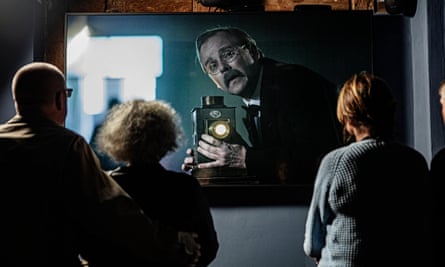
I love spontaneous overnight stops when making long train journeys. Unplanned and with nothing booked in advance, I chanced on Ribe, a town which punched far above its weight in the middle ages as ecclesiastical centre and trade hub. Ribe boasts oodles of history and with its millstreams, parks and cobbled streets, it makes a perfect stopover for anyone travelling through Jutland.
I’ve long been fascinated by social reformer and documentary photographer Jacob Riis (1849-1914) and was surprised to find he was born in Ribe. His How the Other Half Lives (1890) mapped the squalor of American slums and galvanised politicians into taking action on poverty.
Ribe never quite acknowledged Riis’s remarkable work in his lifetime but has made amends by opening a museum in his childhood home. The exhibits probe the life and work of a man who used powerful words and images to cast light in dark places.
Nicky Gardner
Discovering Lusty the limestone man in County Fermanagh
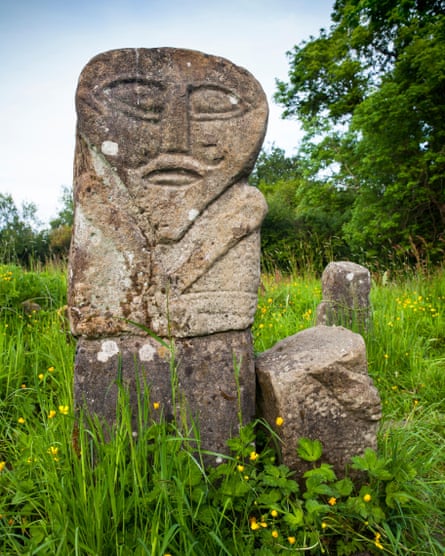
“I think we’ve just passed it – again,” said Mairead, my wife and navigator, just before I hit the brakes. The lonely, unwaveringly straight road appeared to go on to infinity, a thin streak of asphalt that cut through Boa Island’s lush, flat countryside from causeway to causeway. I pulled off the road and eased down a laneway. Ahead, Lough Erne glistened through the branches of ancient trees and birds called and sang at the height of nesting season.
As we entered the old turnstile to Caldragh cemetery, it occurred to me that everything about this discovery was shrouded in ambiguity and contradiction. For starters, Boa Island has nothing to do with snakes. It was, in all likelihood, named after the druid goddess Badhbh. As for Lusty Man, who we had come to visit: he’s a stubby chiselled figure with zero trace of testosterone, sculpted from limestone in some indeterminate time between the bronze age and the early middle ages.
Lusty stands low in the middle of the small graveyard by the slightly taller Janus figure – the mysterious muse of Seamus Heaney’s poem, January God. It’s a two-headed, two foot-high stone statue with sharp features like a Guy Fawkes mask. Both statues blend into the slabs and stumps of weathered, forgotten headstones in the bumpy terrain. Experts cannot decide whether the figures are Christian or take the form of earlier Irish deities, but that ambiguity just adds to the ethereal setting and made it my discovery of 2023.
Vic O’Sullivan
A gorgeous B&B amid spectacular gorges in Piedmont, Italy

“If only we’d brought water,” I wailed. In this year’s heatwave, we’d stupidly set off from Monteu Roero to “just have a look” at one of several walking trails around the rocche, a stretch of spectacular gorges, cliffs and rocky pinnacles. The route was so beguiling we were tempted on and on. Then, just as we were telling ourselves it was mad to walk a five-mile route in 34C without a drink, I spotted a tap in an open farmyard. No one was about so we hurried over and bent under the tap to gulp the cool water. “Would this help?” came a gentle voice. Elettra Griseri had silently appeared holding a jug and glasses.
And that’s how we discovered L’Ottavo Sapore – farm, shop and three-room B&B (doubles from €65), where the remarkable Elettra grows vines, hazelnuts, honey, saffron and sweet chestnuts. She also makes and sells biscuits, cakes and a hazelnut spread that will spoil Nutella for you for ever. This and more go into generous breakfasts served under a traditional brick-vaulted ceiling, fuel for more dramatic walks – with full water bottles, of course.
Liz Boulter
One of the world’s most beautiful cinemas, Amsterdam

I only went to escape the relentless Amsterdam rain; I wasn’t expecting the Tuschinski theatre to be the most beautiful cinema I’d ever seen. But it was clear even from the dramatic sculpted facade – which blends art deco, art nouveau and Amsterdam school architectural styles – that this was somewhere special.
The dazzling interior was even more impressive – gold plastering, ornate metal lights, glazed tiles and red velvet in the style of a grand old opera house (it’s a live performance space as well as a cinema). It was created by Abraham Tuschinski and opened in 1921, with a lobby designed to give cinemagoers a feeling of “stepping into an illusion”. A century on, it remains spellbindingly opulent.
At the ticket booth I remembered a line by Vincent (John Travolta) in Pulp Fiction: “You can walk into a movie theatre in Amsterdam and buy a beer. And I don’t mean just like in no paper cup; I’m talking about a glass of beer.” Happily, it’s true – and I don’t mean no ordinary beer; I’m talking about an 8% Brouwerij ‘t IJ, a delicious, heady, fruity blond served in an elegant bespoke glass. I rested it on a small table (with its own art deco lamp) beside my plush reclining velvet chair … This place was as cool as Pulp Fiction!
The only thing I got wrong was my choice of film: Scorsese’s interminable Killers of the Flower Moon. I could have done with at least another couple of beers to get through it.
Gavin McOwan
At last, East Sussex gets its own ‘megalith’

I live in a county that boasts the mighty Wilmington Giant and 20-odd Neolithic hill forts. However, unlike Wiltshire, further west, it was until recently bereft of stone monuments. This year I was delighted to discover that thanks to the musical duo Jem Finer and Jimmy Cauty (the latter best known for being one half of the KLF), East Sussex now has the mighty Gurdy Stone – two and a half tonnes of Welsh slate that sits up in the South Downs overlooking the village of Kingston.
Its arrival on Lovebrook Farm in April – via lorry then a digger – was heralded by a ceremonial procession (Wicker Man style), speeches, music and plenty of yellow smoke bombs to create the right atmosphere. Here it is expected to remain for the next 50,000 years – enough time, as decreed by its custodians, to herald the return of the Green Comet, last visible during the stone age. In a time of great resurgence of interest in paganism, the Gurdy Stone is a fitting new monument for honouring our past and our future.
The stone is on Lovebrook Farm and can be visited on Saturdays, dawn-1pm
David Bramwell
A slow drive around a peaceful Highland peninsula

Every year I go on a driving trip with Bob, one of my oldest friends. He likes to drive; I’m not keen. We have honed these trips over the years, going slowly, stopping often, avoiding motorways.
This year we booked a cabin in rural Inverness-shire and played it by ear. We travelled via Loch Lomond and the Glen Coe beauty spots but avoided the busy NC500. This opened up new areas on the map.
A few years ago, while “researching” (idly websurfing) Scottish weather, I read that Portmahomack was the driest place in the country. I’d also read about the north-east coast in an Inspector Rebus novel, which gave me an idea. It’s always an interesting experiment to see if you imagined a place correctly.
We crossed the Kessock and Cromarty bridges and turned east to Easter Ross, a peninsula of low-lying farmland that looked rich and golden under the late summer sun. Portmahomack was pretty and blissfully quiet. The road took us through the so-called Seaboard villages, huddling down but facing outwards. We rode the ferry back.
Our cabin was close to Loch Ness but not too close: the balcony looked out on to Loch Ruthven, where I saw Slavonian grebe chicks following their mums around the reedbeds. These birds are as rare as they are beautiful. The sun shone warmly for five days and I fell for Scotland all over again.
Chris Moss
Chugging across Spain’s Bay of Cádiz was a revelation

To my surprise I found myself in a naval review with the king of Spain last year, an experience that reminded me how much better it was to be actually on the water than admiring it from a fish restaurant.
The event led me to begin craving boats. Not resort-style banana boats or sunset cruise catamarans but the sailing dinghies and basic things with outboard motors you hire on holiday in Greece and Turkey but don’t in Cádiz. Why not? Because hardly anyone knows you can. The discovery that I could take a small boat out (without a licence or captain) from the back (east-facing) side of Cádiz or the ports at Sancti Petri and El Puerto de Santa Maria, opened the way to a series of sub-discoveries.
I simply hadn’t noticed the estuaries, salt marshes and water meadows, island castles, wading birds, inaccessible beaches, or the recreational sailors tacking across the Bay of Cádiz every weekend. Essentially, after a decade living in this seafaring province, this year I discovered the sea.
Dinghies from Zaida sailing school cost €35 for two hours (courses also available), and motor boats from Argosailing start at €80
Sorrel Downer
Fine art meets heavy industry at this brilliant Polish museum

Poland keeps pulling me back to its world-class museums. At the interactive Warsaw Rising Museum, for example, I followed a route past improvised sewers and a Liberator bomber telling the story of the Polish resistance in 1944.
This year, in Katowice (40 miles west of Kraków), I happily lost an afternoon at the brilliant Silesian Museum. Built on the site of a former coalmine, it showcases regional Silesian fine art and archaeology and narrates the journey of Katowice via videos, photography and modern art, from a centre of heavy industry through to the 1990s – when the closing of some mines saw homelessness and drug consumption soar – to today’s city, a hopeful hub of culture and conferences (Cop24 was held there in 2018).
I plan on returning to Katowice for a concert by the National Polish Radio Symphony Orchestra in its modern hall next to the museum, and for another cherry vodka at slick bar Wisniewski, which serves nothing else.
Caroline Eden
Hot springs and indoor rain in Veneto, Italy

It is more than 40 years since I visited the Italian town where my father was born, and the only thing I can remember is a toy shop with an enviable lineup of dolls in the window. It has taken me four decades to return and discover that Abano Terme is a spa town blessed with hot springs that come out of the ground at 70-90C (tempered to a comfortable thirtysomething degrees for use in the pools) and is famous for its therapeutic mud treatments. Abano lies at the foot of the Eugenean hills, a 45-minute drive from Venice and 20 minutes from Padua, but despite its proximity to these popular visitor destinations the town seems to have fallen off the radar for most visitors to Italy. It does, however, attract plenty of Italians and Germans, who seem to have cottoned on to its full-on sense of wellness at affordable prices.
Each hotel has a plethora of pools, many in acres of gardens. Hotel Mioni Pezzato, among the more modern, has six thermal baths and 16 pools, not to mention indoor rain, a pool with exercise bikes and a whirlpool. If only I’d known it existed when I was eight. My dolls would have loved it.
Max Benato

Robert Johnson is a UK-based business writer specializing in finance and entrepreneurship. With an eye for market trends and a keen interest in the corporate world, he offers readers valuable insights into business developments.








